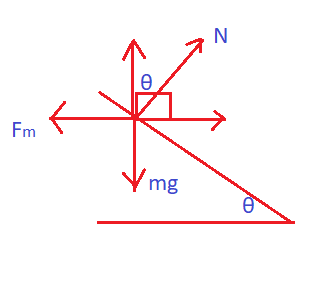he figure below shows a bar of mass m = 0.270 kg that can slide without friction on a pair of rails separated by a distance ℓ = 1.20 m and located on an inclined plane that makes an angle ? = 29.5° with respect to the ground. The resistance of the resistor is R = 3.30 Ω, and a uniform magnetic field of magnitude B = 0.500 T is directed downward, perpendicular to the ground, over the entire region through which the bar moves. With what constant speed v does the bar slide along the rails? m/s
he figure below shows a bar of mass m = 0.270 kg that can slide without friction on a pair of rails separated by a distance ℓ = 1.20 m and located on an inclined plane that makes an angle ? = 29.5° with respect to the ground. The resistance of the resistor is R = 3.30 Ω, and a uniform magnetic field of magnitude B = 0.500 T is directed downward, perpendicular to the ground, over the entire region through which the bar moves. With what constant speed v does the bar slide along the rails? m/s
Related questions
Question
The figure below shows a bar of mass m = 0.270 kg that can slide without friction on a pair of rails separated by a distance ℓ = 1.20 m and located on an inclined plane that makes an angle ? = 29.5° with respect to the ground. The resistance of the resistor is R = 3.30 Ω, and a uniform magnetic field of magnitude B = 0.500 T is directed downward, perpendicular to the ground, over the entire region through which the bar moves. With what constant speed v does the bar slide along the rails?
m/s

Transcribed Image Text:7:57
A webassign.net
below shows a bar of ma
a pair of rails separated I
I plane that makes an ang
ance of the resistor is R =
B = 0.500 T is directed
ntire region through whic
pes the bar slide along the
B
Expert Solution
Step 1
The bar is sliding down with the constant velocity, hence the acceleration of the bar is zero. That means the net force on the bar is zero.
There are two forces acting on the bar, one is gravitational force and the other one is the magnetic force due to the applied magnetic field.
The free-body diagram for the bar is shown in the figure below:

As the bar slides down, there is an induced emf in the loop, and the induced emf is given by
Due to this induced emf, there is an induced current I in the loop and hence the loop experiences a magnetic force.
Trending now
This is a popular solution!
Step by step
Solved in 2 steps with 1 images
